Image set
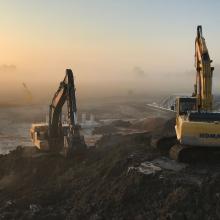
Related services
Related sectors
Related regions
Opening article section
Article section
Rich text
For our key role and contributions to rehabilitating the former Pétromont plant site in Varennes, Englobe team was honoured with two prestigious awards at 2025 Canadian Consulting Engineering Awards annual gala: the Excellence Award as well as the special Sustainability Award, awarded to the project that best demonstrates outstanding environmental achievement.
Rich text
In 2008, after Pétromont Inc. suspended its petrochemical processing operations at two Greater Montreal plants, the company sought to rehabilitate its site in Varennes, Québec. Once the plant was dismantled, several zones within the site presented significant environmental challenges, including the presence of excess quantities of hazardous and complex contaminants.
The following year, Pétromont called on Englobe to conduct an extensive decontamination project. This major undertaking would become one of the largest of its kind in Quebec’s history.
Rich text
A brief history of Pétromont and its petrochemical plants
Established in 1980, Pétromont Inc. was a key player in Québec’s petrochemical sector, specializing in the production of materials used in the plastics, packaging, automotive, and construction industries.
After more than 25 years of successful operation, in 2007 the company began to face financial difficulties due to currency fluctuations, rising raw material costs, and increasing international competition.
Pétromont suspended operations in 2008 and permanently shut down its Varennes and Montréal-East plants in 2009. Since this time, the company has focused on addressing extensive environmental rehabilitation requirements mandated by the Québec Ministry of the Environment, among other obligations.
Media
Image set
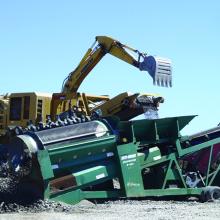
Rich text
Englobe’s innovative approach to remediate the contaminated soil at the former Pétromont petrochemical plant
Following the awarding of this mandate, between 2014 and 2024 Englobe fully rehabilitated this 85,000 m2 site. To do so, the team treated 701,665 cubic metres of contaminated soil; this equates to 1.2 million tons of soil spread across an area equivalent to 88 football fields.
To do so, the team leveraged a unique, innovative technological approach for onsite soil remediation. Known as the biopile approach, this method is founded on the use of native microorganisms as well as technologies for water, air, and soil treatment developed in-house at Englobe.
Media
Image set
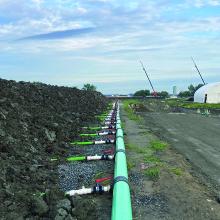
Rich text
Environmental remediation at the former Pétromont petrochemical plant: the biopile approach
The biopile approach is based on the careful cultivation of a microenvironment conducive to the growth of microorganisms that are native to the treated soil. A precise balance of moisture, pH, and nutrient parameters is also achieved to promote the growth of these native fungi and bacteria, enabling the microorganisms to feed on the various contaminants present in the soil and breaking down their molecular chains.
This approach is also characterized by a variety of aeration, filtration, and treatment systems, which work synergistically to recover water and air from the processes for self-sustenance. These systems optimize the use of available resources while limiting losses, given their ability to offer a second life to the resulting “waste” materials.
The biopile approach was therefore ideal for treating contaminated soil at the site of the former Pétromont plant.
Media
Image set
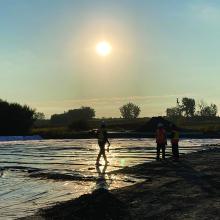
Rich text
The environmental challenges of rehabilitating the former Pétromont petrochemical plant site
While the soil decontamination process was at the heart of the remediation project, the team encountered numerous additional challenges, both environmental and operational.
For example, one work zone was particularly dangerous due to the presence of vinyl chloride and 1,2-dichloroethane (DCA), which produced highly volatile fumes during excavation.
To decontaminate it, the Englobe team innovated by building a mobile ventilated shelter platform. This 25 by 50-metre platform was equipped with alarm systems, mounted on rails, and moved gradually as the soil treatment progressed. Designed to accommodate dump trucks and hydraulic excavators, it featured ventilation systems to recover and filter exhaust gases.
The team also ensured strict adherence to highly rigorous health and safety protocols in order to protect onsite personnel working in this zone.
Media
Image set
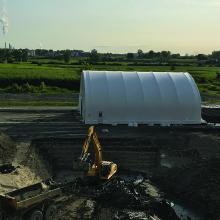
Rich text
Revealing hidden complexities: sustainable innovations to manage environmental contingencies
Not all of the project’s environmental challenges were understood at the outset.
Managing unexpected underground infrastructure: using recovered concrete to create access routes
For example, some underground infrastructure was discovered during excavation, including an oily sewer network covering one-third of the site. As this situation significantly restricted the free movement of workers and machinery on the ground, the team had to create new access routes using crushed concrete recovered during dismantling.
Innovative management of contaminated water: a high-performance mobile system
The clay soil had also caused a significant accumulation of heavily contaminated water, creating further complexity.
As a result, the team designed a mobile trailer-mounted seepage and runoff water management system to separate water and oil and to remove volatile organic compounds (VOCs) and hydrocarbons. With a seven-day, 24-hour autonomy, this system treated more than one million litres of water annually.
Building a regional network for reliable, sustainable procurement
Ensuring a steady annual supply of essential residual materials while guaranteeing their integrity, presented another difficulty. To overcome issues relating to supply and seasonality, the team built a robust regional supplier network founded on close collaboration and clear communication.
Media
Image set
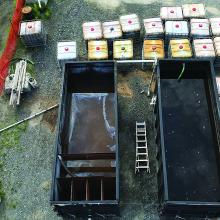
Rich text
An exemplary rehabilitation project: minimizing the environmental impact of the Pétromont project
Reducing the project's environmental footprint through onsite treatment
The attention paid to environmental issues throughout the project resulted in significant benefits. Through the onsite biopiles treatment approach, the Englobe team was able to significantly reduce the project's environmental footprint.
The team’s ability to treat onsite 1.2 million tons of soil, drawn from an area equivalent to 88 football fields, resulted in almost 32,900 fewer semi-trailer truck trips to dispose of contaminated soil and import fill soil.
In total, only 4,000 metric tons were transported offsite to authorized locations, a figure representing less than 1% of the total soil volume treated.
Concrete recycling and sustainable technologies: a low external procurement project
The reuse of concrete recovered during excavation met the project's infrastructure and treatment platform construction needs, with no external supply required. The same was true for water, air, and soil treatment technologies, which, thanks to their complementary nature and circular economy-inspired design, eliminated the need for an external water supply.
Decontamination and restoration of streams, respecting spawning periods
Rehabilitation work to decontaminate soil in the site’s two streams was carried out during the summer months to protect the fish spawning season. In line with recommendations from project partners, the Englobe team rebuilt these waterways, returning them to their natural state.
Media
Image set
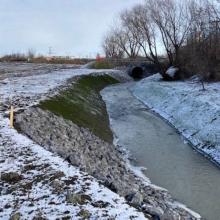
Rich text
Economic and social benefits of the environmental rehabilitation of the former petrochemical plant site
Onsite treatment: reduction of noise, traffic, and GHG emissions benefitting the community
With respect to the project’s impact on the surrounding community, Englobe’s onsite treatment approach significantly reduced a host of inconveniences associated with transporting materials for this type of project. These included noise, traffic, and greenhouse gas emissions caused by truck movements. In turn, this allowed community residents to carry on with their daily activities with minimal disruption.
Urban revitalization: transforming the former Pétromont plant site into a dynamic industrial and commercial hub
The site’s gradual rehabilitation, made possible by Englobe's work, has led to extensive urban and socioeconomic revitalization across the impacted communities, notably through the sale of individual parcels of land for industrial and commercial purposes. In only a few years, major companies such as Costco, Enerkem, and Pélican have set up operations on the rehabilitated site, improving essential services locally and directly contributing to the creation of many jobs.
Media
Image set
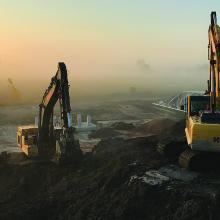
Rich text
An inspiring conclusion: Englobe's sustainable approach significantly reduced the environmental footprint of the decontamination project at the former Pétromont factory site.
The onsite biopiles treatment approach enabled nature to heal itself
Through its innovative biopiles approach, the Englobe team minimized the environmental footprint of the rehabilitation project at the former Pétromont petrochemical plant site. By stimulating native soil microorganisms with residual materials, this method eliminated the need for harmful chemical fertilizers.
A unique, innovative technological and conceptual approach based on onsite treatment
In addition, the team's ability to treat over 99% of the contaminated soil onsite negated the harmful effects of material transportation and disposal throughout the project. This approach spared local landfills and minimized the number of required truck trips, and their associated greenhouse gas emissions.
The Englobe team founded its approach on circular economy principles that are respectful of the environment, limited disruptions to community life, and proved to be highly cost-effective for the client.
Reducing waste through sustainable technologies
Moreover, the air, water, and soil treatment technologies and systems designed by Englobe made it possible to reduce waste generation by diverting existing resources for other project needs.
Media
Image set
Rich text
In this video (French only) on the AFG Career series, Marie-Claude Drouin, chemical engineer and Project Director for site remediation at Englobe, presents the work carried out to decontaminate the huge former site of the Pétromont petrochemical plant.
Careers in consulting engineering: environmental chemical engineer (french only)
Media
Image set
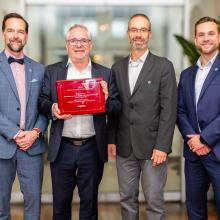
Rich text
A prestigious award win for Englobe's excellence and commitment to the Pétromont project
The Englobe team’s technical rigour and innovation, careful attention to environmental concerns, and strict adherence to sustainable practices and client needs throughout the project have been honoured with the prestigious 2025 Canadian Consulting Engineer (CCE) Award in the Technical – Environmental Remediation category.
This project was also nominated for a 2025 Québec Consulting Engineering Award in the Environment category, presented by the Association des firmes de génie-conseil du Québec (AFG).